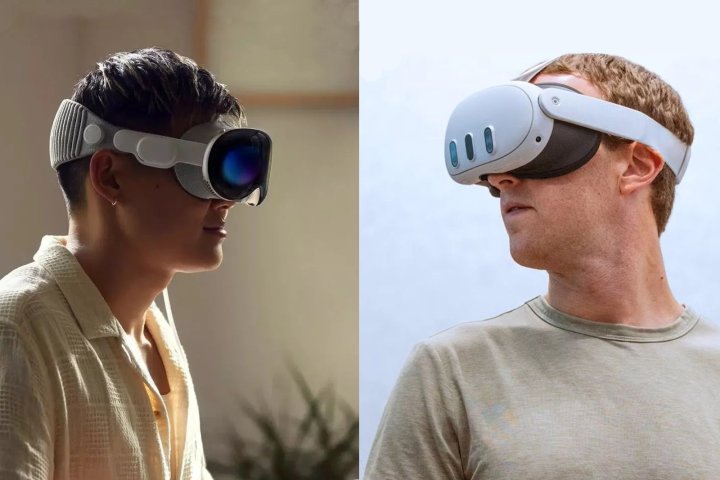
Meta’s Quest 2 is the world’s most popular VR headset, and the latest Quest 3 is selling well and will quickly reach second place. However, the Vision Pro will arrive within days. While Apple’s VR headset outclasses Meta’s best in every way, the self-proclaimed “metaverse” company is reportedly optimistic about Apple entering the market.
The timing of the Quest 3’s launch in October 2023 was perfect, riding the wave of excitement Apple created about mixed reality with the Vision Pro announcement four months earlier. Meta captured VR holiday sales before Apple’s headset was available and now benefits from increased media coverage and comparisons of the Vision Pro and Quest 3, often with a focus on the vast price difference.
According to a recent report from The Wall Street Journal, Meta is hoping to become the Android of VR to Apple’s Vision Pro. Meta needs virtual reality to succeed in its long-term plan to build the metaverse. Despite pouring $50 billion into research and development and creating market-leading VR headsets that sell at little to no profit, virtual reality is still struggling.

Thus far, VR is seen as an alternative gaming system. Console gamers and PC gamers are entrenched in their preferred game franchises and platforms, so it’s hard to break through via gaming. Interest is growing in VR fitness, which gamifies exercise and makes home workouts feel like traveling to exotic locations. Meta desperately wants people to use headsets for work, and although VR is growing — progress has been slow.
Apple has the ability to change that. The Vision Pro is a very impressive technology showcase, but its ultra-premium price places it out of reach for most consumers. The alternative is clearly a Meta VR headset. The Quest 3 ($500) costs one-seventh as much and offers many similar features, including multiple browser screens, mixed reality, and the same ability to connect to a Mac.
Meta has been the only major tech leader pushing virtual reality and mixed reality forward for many years. It makes sense the company would welcome some assistance in raising awareness. While Apple is an imposing presence, there’s plenty of room for competition, and the Vision Pro pricing makes it a luxury item that won’t affect Quest 3 sales.
If Apple really does launch a lower-cost Vision Pro in 2025, Meta might not be as happy. Neither company will stand still, and even the possibility of competitive pricing will drive Meta to keep improving its products and adding features to come closer to matching the new spatial computing standard set by Apple’s Vision Pro.
Editors' Recommendations
- Google has a chance to take on the Quest and Vision Pro in a big way
- 5 headsets you should buy instead of the Vision Pro
- Quest Pro 2: What we know about Meta’s next premium VR headset
- This new VR headset beats the Vision Pro in one key way and is half the price
- Meta Quest 4: Here’s what we want from the next big VR headset



